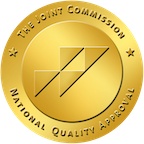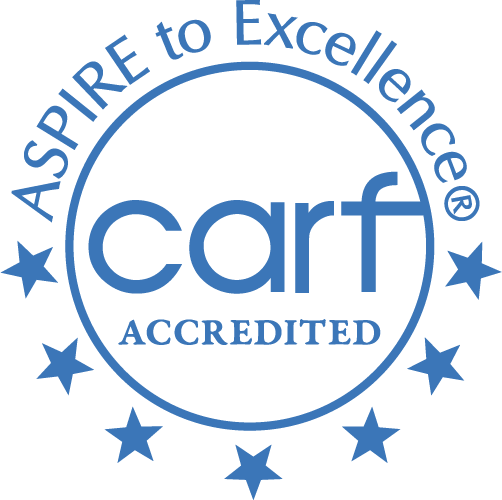Skip To Rehab Listing
Drug and Alcohol Treatment Settings and Approaches in Ellijay, GA.
Drug and alcohol addiction impacts people of all ages, genders, and walks of life. The alcohol and drug rehabilitation programs and services, such as short term drug and alcohol rehabs, long term rehab programs, outpatient substance abuse treatment services, outpatient detoxification programs, inpatient rehabs, are designed to offer high-quality care to anyone who has a problem with addiction, regardless of their personal situation.
Drug and alcohol rehabs in the Ellijay area are not all the same. They offer a range of modalities, like trauma-related counseling, dual diagnosis drug rehab, vocational rehabilitation services, rational emotive behavioral therapy, brief intervention approach, 12-step facilitation approach, that enable patients to face their drug and alcohol abuse in the way that is most beneficial for them.
Special Programs for Substance Abuse Treatment
Even with the prevalence of substance abuse, each person who struggles with alcohol and drug addiction issues has their own unique circumstances that require an individualized approach. That is why the rehabs in Ellijay offer several special resources like social skills development, substance abuse education, child care for clients children, suicide prevention services, persons with serious mental illness, transgender or (LGBT) clients.
Rehab Payment Options
Patients and their families should not postpone recovery because of concerns about cost. Rehabs offer several alternatives for payment, like the following: private medical insurance, private pay, medicaid, medicare, military insurance, state corrections or juvenile justice funds, other state funds. Drug and alcohol rehabs can direct patients and their loved ones toward the payment plans that will put rehab within their reach.
People who struggle with drug and alcohol abuse should not hesitate to take advantage of the various resources available in Ellijay, Georgia.
Commonly Asked Questions about Addiction and Treatment
What are the effects of drug addiction?
-
Physical health: Chronic drug use can lead to various health complications, including damage to the liver, kidneys, heart, and lungs. It can also weaken the immune system, making individuals more susceptible to infections and diseases. Furthermore, the method of drug consumption, such as injecting, can increase the risk of blood-borne diseases like HIV and hepatitis.
-
Mental health: Drug addiction can exacerbate or cause mental health issues such as depression, anxiety, and psychosis. Prolonged drug use can also lead to cognitive impairments, affecting memory, attention, and decision-making abilities.
-
Personal relationships: Addiction often strains relationships with family and friends, leading to social isolation and a breakdown of support networks. Trust issues, conflict, and emotional distress can arise as a result of drug-seeking behaviors and the impact of addiction on the individual's life.
-
Financial consequences: Drug addiction can result in financial instability due to the costs associated with obtaining drugs and the potential loss of employment or income. This can lead to poverty, homelessness, or further dependence on social support systems.
-
Legal issues: Drug use and addiction can lead to criminal activity, both directly (through possession or distribution of illegal substances) and indirectly (through actions taken to acquire drugs or money to buy drugs). This can result in legal consequences such as arrest, imprisonment, or fines.
-
Overdose and death: The risk of overdose and death is significantly increased among individuals with drug addiction. Overdose can occur as a result of taking too much of a drug or mixing substances, which can lead to fatal consequences.
-
Impact on society: Drug addiction has far-reaching effects on society, including increased healthcare costs, lost productivity, crime, and the burden on the criminal justice system. Additionally, drug addiction can contribute to social stigma and discrimination, further exacerbating the challenges faced by those struggling with addiction.
What are the signs of liver damage from alcoholism?
Alcoholism, or Alcohol Use Disorder (AUD), can lead to liver damage over time as the liver struggles to process excessive amounts of alcohol. Liver damage due to alcoholism can manifest in various ways, with signs ranging from mild to severe. Some common signs of liver damage from alcoholism include:
- Jaundice: One of the most recognizable signs of liver damage is the yellowing of the skin and eyes, known as jaundice. This occurs when the liver is unable to properly process bilirubin, a waste product that accumulates in the body.
- Abdominal pain: Individuals with liver damage may experience pain or discomfort in the upper right abdomen, where the liver is located.
- Swelling in the abdomen: Liver damage can lead to the accumulation of fluid in the abdominal cavity, a condition known as ascites. This can cause swelling and discomfort in the abdomen.
- Fatigue: Impaired liver function can result in persistent fatigue, weakness, and a general lack of energy.
- Dark urine: Liver damage can cause the urine to become darker in color, often appearing brown or tea-colored.
- Pale or bloody stools: Individuals with liver damage may notice pale, clay-colored, or bloody stools, indicating that the liver is struggling to process waste products.
- Bruising or bleeding easily: The liver plays a crucial role in blood clotting. When the liver is damaged, it may struggle to produce adequate clotting factors, resulting in easy bruising or prolonged bleeding from minor cuts or injuries.
- Loss of appetite: Liver damage can lead to a decreased appetite or unexplained weight loss.
- Nausea and vomiting: Impaired liver function can cause feelings of nausea or even vomiting.
- Itchy skin: Liver damage can result in the buildup of bile salts in the skin, leading to itchiness and irritation.
- Spider angiomas: Some individuals with liver damage may develop small, spider-like blood vessels visible beneath the skin, known as spider angiomas.
- Confusion or disorientation: In advanced cases of liver damage, toxins that would normally be filtered by the liver can build up in the bloodstream and affect brain function, leading to confusion, disorientation, or even coma.
It is important to seek medical attention if you or someone you know is experiencing signs of liver damage from alcoholism. Early diagnosis and intervention can help prevent further damage and improve the chances of recovery. Treatment may include abstaining from alcohol, making lifestyle changes, and addressing any underlying health conditions contributing to liver damage.
How can society prevent teen substance abuse?
Preventing teen substance abuse requires a comprehensive, multifaceted approach that involves various sectors of society, including families, schools, communities, and the healthcare system. Here are some strategies that can be employed:
Education and Awareness: Schools and communities can provide education about the dangers of substance abuse, the nature of addiction, and the benefits of healthy lifestyle choices. This education should be accurate, age-appropriate, and engaging.
Family Engagement: Parents and caregivers play a critical role in prevention. They can talk openly with their children about substance abuse, set clear expectations around substance use, monitor their children's activities and friendships, and provide a supportive and nurturing environment.
Early Intervention: Early identification of risk factors for substance abuse (such as mental health issues, academic struggles, or behavioral problems) can allow for timely intervention. Healthcare providers, educators, and parents can all play a role in identifying and addressing these risk factors.
Access to Mental Health Services: Teens with mental health conditions are at a higher risk of substance abuse. Ensuring access to mental health services can help address these underlying issues and reduce the risk of substance abuse.
Healthy Activities: Providing teens with opportunities for healthy, engaging activities (like sports, arts, volunteering, etc.) can reduce boredom and stress, provide a sense of purpose and belonging, and offer positive alternatives to substance use.
Community Support: Communities can create environments that support healthy choices and discourage substance use. This can include things like enforcing age restrictions on the sale of alcohol and tobacco, providing safe and substance-free recreational opportunities for teens, and fostering a community culture that values health and wellbeing.
Substance Abuse Programs: Schools and communities can implement evidence-based substance abuse prevention programs. These programs can teach skills for resisting peer pressure, making healthy decisions, and coping with stress.
Policy Measures: Policies can be implemented that help prevent substance abuse, such as those that limit the advertising of alcohol and tobacco products, regulate the prescription of addictive medications, and support substance abuse prevention and treatment services.
Peer Support and Leadership: Peer-led initiatives can be very effective in preventing teen substance abuse. Teens may be more likely to listen to and be influenced by their peers. Peer leaders can model healthy behaviors, challenge norms around substance use, and provide support to their peers.














